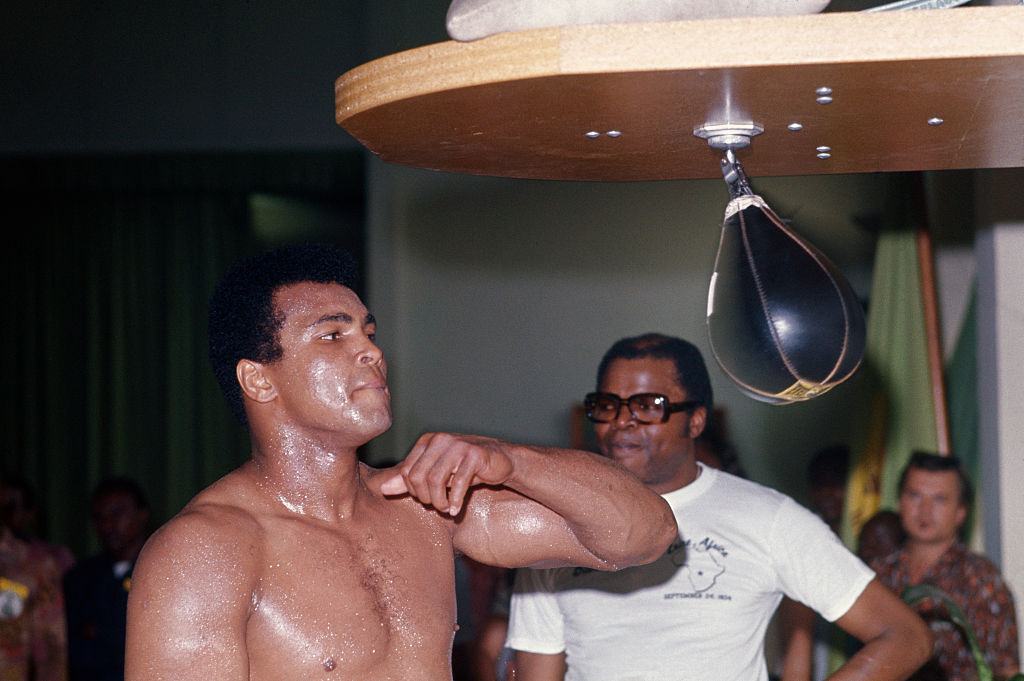Sports
Muhammad Ali Won a $10 Million Fight Thanks to a Ringside Photographer

In the world of sports, certain names are synonymous with success. On the baseball diamond, it's still hard to top Babe Ruth; on the gridiron, no one has won more than Tom Brady. When it comes to boxing, however, Muhammad Ali stands alone as “The Greatest.”
Even the best boxers need occasional need some help, though. In 1974, Ali sought some advice from a ringside photographer before his famous ‘Rumble in the Jungle.” That guidance helped him win the $10 million fight and changed the course of boxing history.
Muhammad Ali's rise to the top of the boxing world
Once he hit the boxing ring, Muhammad Ali developed into one of the greatest fighters of all-time. His road to the top, however, started in many different circumstances.
Growing up in Kentucky, a young Cassius Clay discovered that his bike had been stolen. When he went to report the crime to police officer Joe Martin, the boy mentioned that he wanted to beat the thief up; Martin also ran a local boxing gym, so he invited Clay in to learn how to fight.
With the proper training, Clay turned into a dominant fighter. In 1964, he upset Sonny Liston to claim the heavyweight title; shortly after that victory, Clay adopted the name Muhammad Ali. He then beat Liston, albeit controversially, in the rematch to retain the belt.
Life at the top wasn't completely straightforward, though. Ali famously refused to be drafted into the United States Armed Forces; he was consequently stripped of his title and banned from boxing in every state. Once he returned to the ring in 1970, however, Ali proved he was still a force to be reckoned with.
A ringside photographer inspires the rope-a-dope
Once he was allowed to box again, Muhammad Ali attempted to retake the heavyweight title. While he lost to Joe Frazier, he would get another chance against the title after George Foreman claimed the belt.
Prior to that famous “Rumble in the Jungle,” Ali wasn't sure if he could handle the younger, more powerful Foreman. Looking for advice, he called George Kalinsky, Madison Square Garden's resident photographer. Their conversation would change the course of boxing history.
“You know Muhammad? You’ve been training all your life for this fight,” Kalinsky told Ali, according to the New York Post. “What you were always doing was leaning against the ropes, and you let your sparring partner hit you and hit you and hit you in the stomach. So what you have to do with Foreman is the same thing — act like a dope on the ropes. The more he pounds away at you, the more tired he’s going to get.”
“You want me to be a Rope-A-Dope,” Ali quipped. At that moment, his famous strategy was born.
Riding the rope-A-dope to a $5.45 million payday
During the Rumble in the Jungle, Muhammad Ali did use the rope-a-dope strategy. While intentionally absorbing punches seemed unconventional, it helped him reclaim the heavyweight title.
Throughout the fight, Ali did everything he could to provoke Foreman. He leaned against the ropes, inviting punishment; he taunted his opponent during clinches, daring him to punch harder. Foreman complied, opening himself to punishment and eventually tiring himself out. Robbed of his advantage, the defending champion couldn't compete. Ali knocked Foreman out in the eighth round, claiming the title and heading home with $5.45 million of the $10.45 million purse.
Today, the Rumble in the Jungle and the rope-a-dope are indelible parts of Muhammad Ali's legacy. Things might have turned out differently, however, if not for the advice of George Kalinsky.











